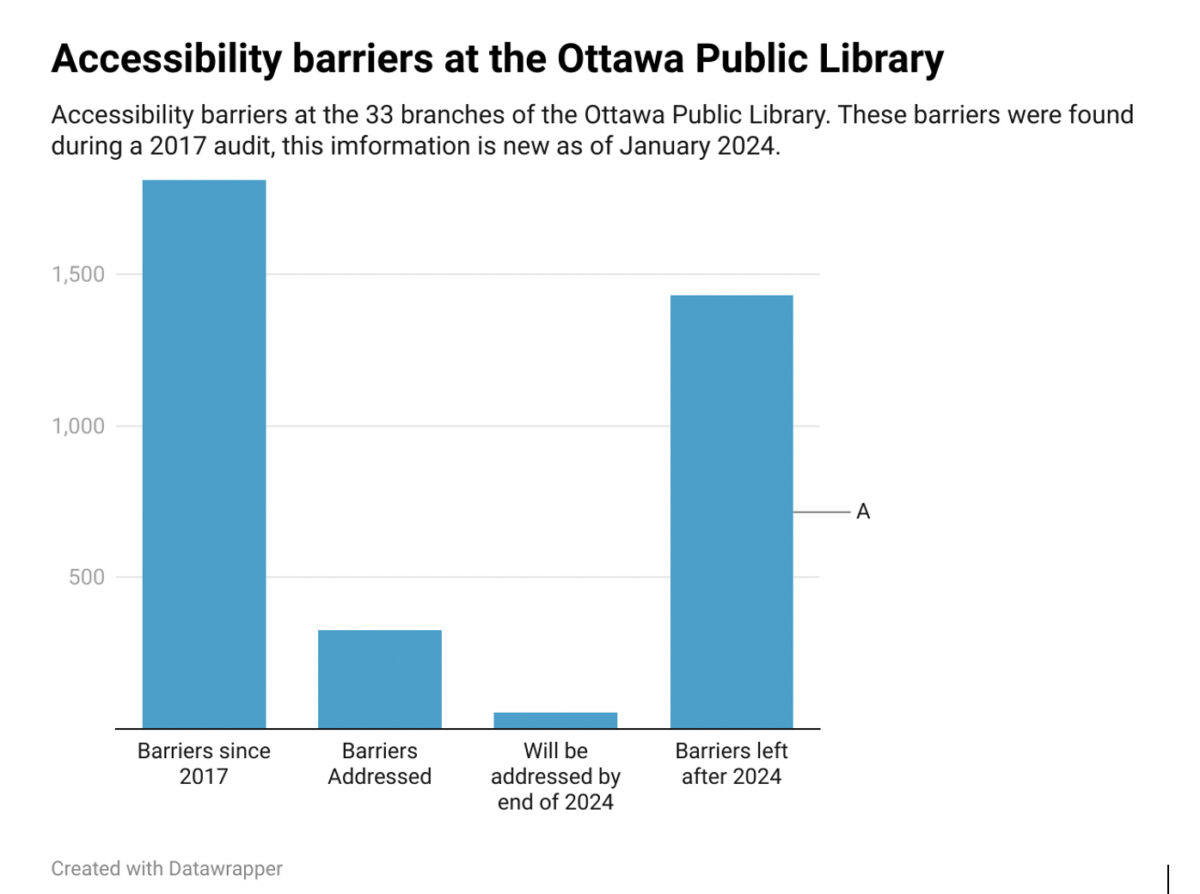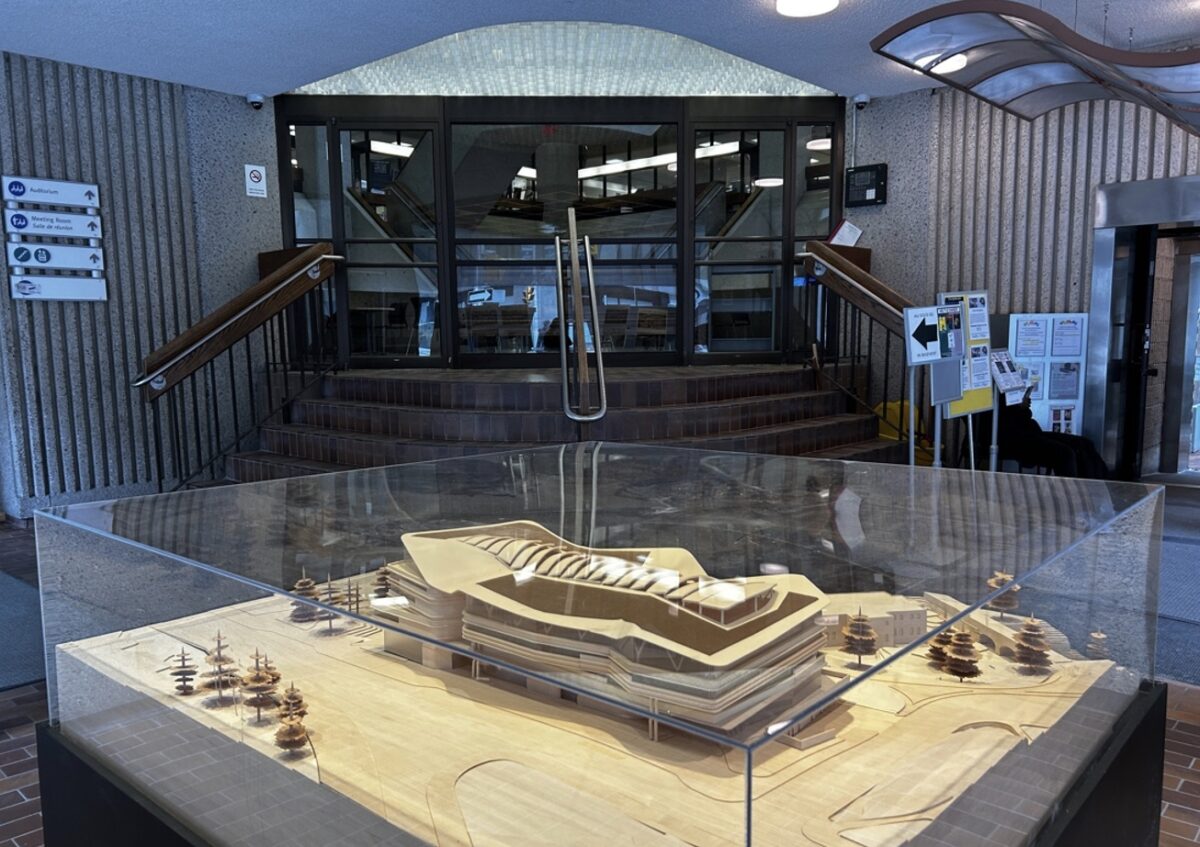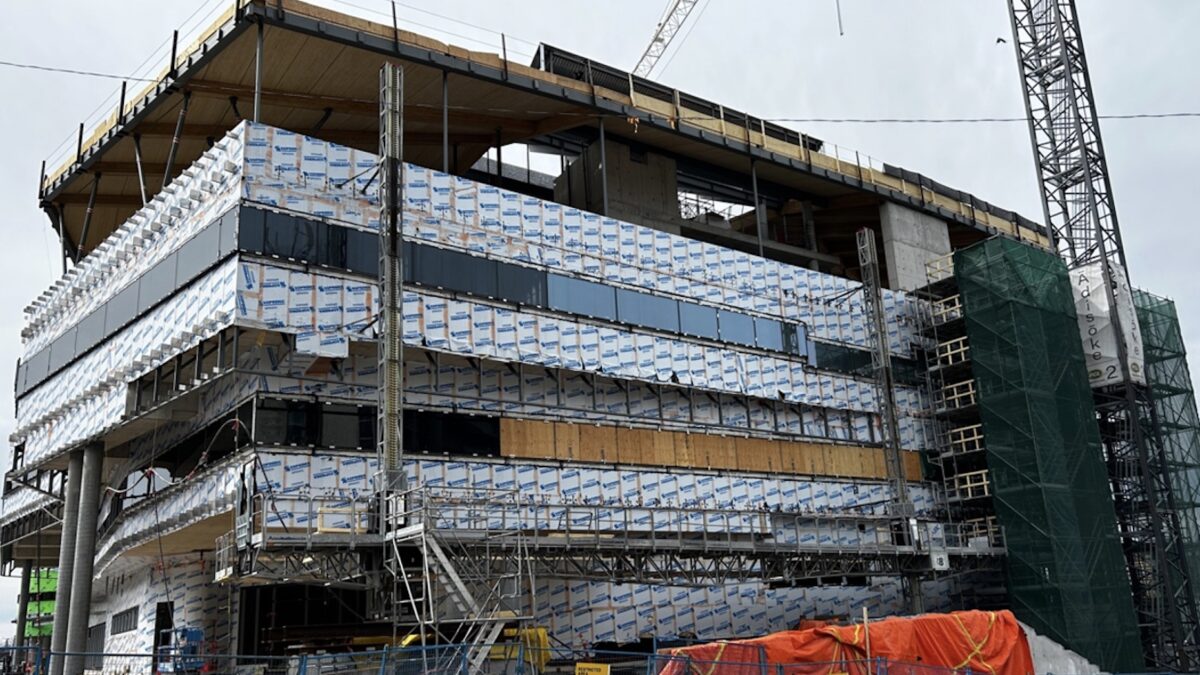A new report charting the Ottawa Public Library’s progress toward greater accessibility shows the system making headway but with a long way to go removing barriers for those living with disabilities.
The report recently tabled with the Ottawa Public Library Board shows 1,485 accessibility barriers at the OPL system, down from 1,811 in 2017.
The update was recently presented to the library board by Anna Basile, deputy CEO of the OPL.
“The City and OPL are committed to making library facilities accessible to all,” said Andrew Smith, the city’s program manager for infrastructure renewal. “City Council approves projects to remove barriers to accessibility each year through the capital budget process.”

Barriers include incorrect heights for light switches and power door controls, lack of, or wrong height of grab bars in washrooms, ramps with improper slopes and lack of space between bookshelves.
In a note Basile wrote: “With the upcoming demolition of the old Metcalfe branch and the addition of a universal washroom in Alta Vista, an additional 54 barriers will be removed within 2024. … Accessibility projects are continuously reviewed by staff at both OPL and the City, and are consistently being addressed by way of large renovations or minor capital expenditures where possible.”
While not everyone would be affected by these barriers, Charlie Morgan — a student at Carleton University who uses a wheelchair — says every barrier removed means another place made available to all citizens.
Facilities range in age when accessibility codes were not as prevalent as they are today. Many of the barriers exist because buildings followed the requirements at the time they were constructed, and these standards have since been updated.
Andrew Smith, program manager for infrastructure renewal, City of Ottawa
“It does help, certainly,” said Morgan. “Every barrier addressed is another building I can go into, another book I can reach. But it would be nice if they could all be fixed.”
Jerry Fiori with the Ottawa Disability Coalition said that based on the amount of capital funding going to the city’s libraries, it’s not surprising that they have not addressed more of the barriers.
“The City of Ottawa was supposed to be fully accessible by 2025, which is the time specified by Accessibility for Ontarians with Disabilities,” Fiori said. “It’s quite obvious that the Ottawa Public Library, which is part of the City of Ottawa, is not going to this reach that target.”
He said the city isn’t dedicating enough of the capital budget towards accessibility or the OPL in general. This means that removing barriers is going to take more time.

The building code was updated in 2015 to set accessibility standards in new buildings and buildings under renovation including adding barrier-free paths and visible, accessible fire alarms.
Morgan said the 2015 update meant renovated buildings “had to be fully accessible … and we’re in 2024. It’s been nine years — why isn’t everything accessible?”
However, these requirements are not applicable to buildings with no renovation plan. Many older buildings have different accessibility standards.
I’m glad that they are working to remove barriers. However slowly, every step forward is a step forward.
Charlie Morgan, Carleton University student who uses a wheelchair
“It is important to note that the facilities range in age when accessibility codes were not as prevalent as they are today,” Smith explained. “Many of the barriers exist because buildings followed the requirements at the time they were constructed, and these standards have since been updated.”
The city’s new central Adisoke Public Library and Archives, currently under construction on LeBreton Flats near Bronson Avenue is being built under the 2015 building codes.
Accessibility advocates say every barrier removed allows people to reach one more place they couldn’t before.
“I’m glad that they are working to remove barriers,” Morgan said. “However slowly, every step forward is a step forward.”




